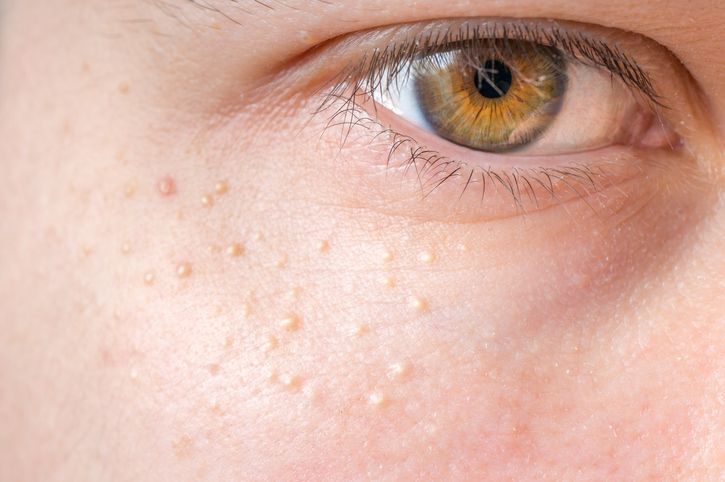- Home
- Trend
- Weight Loss Strategies
- Acne Tips
- Hair Health Information
- Blemish Removal Tips
- Acne Scar Removal Tips
- Muscle Building Techniques
- Intimate Care Tips
- Postpartum Intimate Care
- Eye Bags Wiki
- Tips for Face Slimming
- Secret of Permanent Hair Removal
- Breast Enlargement Tips
- Cure to Snoring
- Marionette Lines
- Skin-Tightening Secrets

免費體驗
S6 Body Sculpting Treatment
1 Minute Self-Registration
Date should not be before minimal date
In the world of fitness and health, the term "skinny fat" is used to describe people who look thin but actually have too much body fat. This might seem confusing, but it highlights the fact that just looking at weight on a scale isn't enough to understand someone's health. In this detailed discussion, we'll break down the concepts of skinny fat, normal weight obesity, and body composition. We'll talk about things like muscle mass, visceral fat (fat around organs), and how they affect overall health.
1
Definition of Skinny Fat

2
Can We Spot Skinny Fat from Weight and BMI?

Normal Weight Obesity (NWO)
Normal Weight Central Obesity
Metabolically Obese, Normal Weight (MONW)
Sarcopenic Obesity
Visceral Fat Dominance
Cachexic Obesity
Skinny-Fat with Low Muscle Mass
- Nutritionist Debunks 3 Hidden Fat Traps of Eating Oats at Midnight + 4 Health Benefits + 3 Easy Recipes for Healthier Late-Night Snacking!
- Dukan Diet: The Royal Slimming Secret Behind Kate Middleton’s S-Curve Figure
- Is Laser Lipolysis Risky? Here’s 6 Key Areas + Common Side Effects Before You Book
- [2025 Hong Kong Beauty Salon Guide] 6 Common Scams to Avoid + Most Popular Facial & Slimming Treatments!
3
How Can A Skinny Person Tell If Their Fat Mass Is Abnormal?

1. Body Fat Percentage
2. Muscle Mass
3. Overall Appearance
4. Lifestyle Factors
5. Health Assessment
4
Metabolically Healthy vs. Metabolically Obese


免費體驗
S6 Body Sculpting Treatment
1 Minute Self-Registration
Date should not be before minimal date
5
How to Combat Skinny Fat And Lose Weight On Where You Should

1. Striking a Balance Between Cardio and Strength Training
2. Preserving Muscle While Losing Fat
3. The Role of Nutrition in Shaping Your Body
4. Avoiding the Pitfalls of Excessive Cardio and Extreme Dieting
5. Tailoring Approaches to Individual Needs
6. The Significance of Regular Physical Activity
6
Quick Tips on What Kind of Food Should You Avoid in Singapore to Prevent Skinny Fat

Limiting Processed Foods
Watching Portion Sizes of Hawker Center Dishes
Moderating High-Calorie Treats
Balancing Carbohydrates
Including Lean Proteins
Choosing Healthier Cooking Methods
Prioritising Fresh Fruits and Vegetables
7
Conclusion


免費體驗
S6 Body Sculpting Treatment
1 Minute Self-Registration
Date should not be before minimal date
FAQ

1. What does the term skinny fat mean?
Skinny fat is a term used to describe individuals who may appear thin or have a normal weight but actually have a higher body fat percentage and lower muscle mass. It highlights the importance of looking beyond just weight and considering factors like body composition for a more accurate assessment of health.
2. Can two people with the same body mass index (BMI) have different body fat percentages?
Absolutely. BMI is a measure based on weight and height and does not account for muscle mass. So, two people with the same BMI might have different amounts of body fat and muscle. This emphasises the limitation of relying solely on BMI for a comprehensive understanding of one's body composition.
3. How does having a skinny fat body type impact health?
Having a skinny fat body type means carrying excess body fat despite appearing slim. This condition can be associated with health risks such as insulin resistance and cardiovascular issues. It underscores the importance of addressing not just weight but also the distribution of fat and muscle for overall well-being.
4. Is it possible to lose weight without losing skeletal muscle mass?
Yes, it is possible. To prevent the loss of skeletal muscle mass during weight loss, it's essential to adopt a gradual and sustainable approach. Incorporating strength training into the routine helps preserve muscle while focusing on fat loss, promoting a healthier body composition.
5. What steps can skinny fat people take to improve their body composition?
Skinny fat individuals can make positive changes by incorporating a balanced approach. This includes engaging in strength training exercises to build muscle, incorporating cardiovascular activities for overall fitness, and paying attention to nutrition for a well-rounded, sustainable improvement in body composition. This multifaceted approach supports both fat loss and muscle preservation for better overall health.








